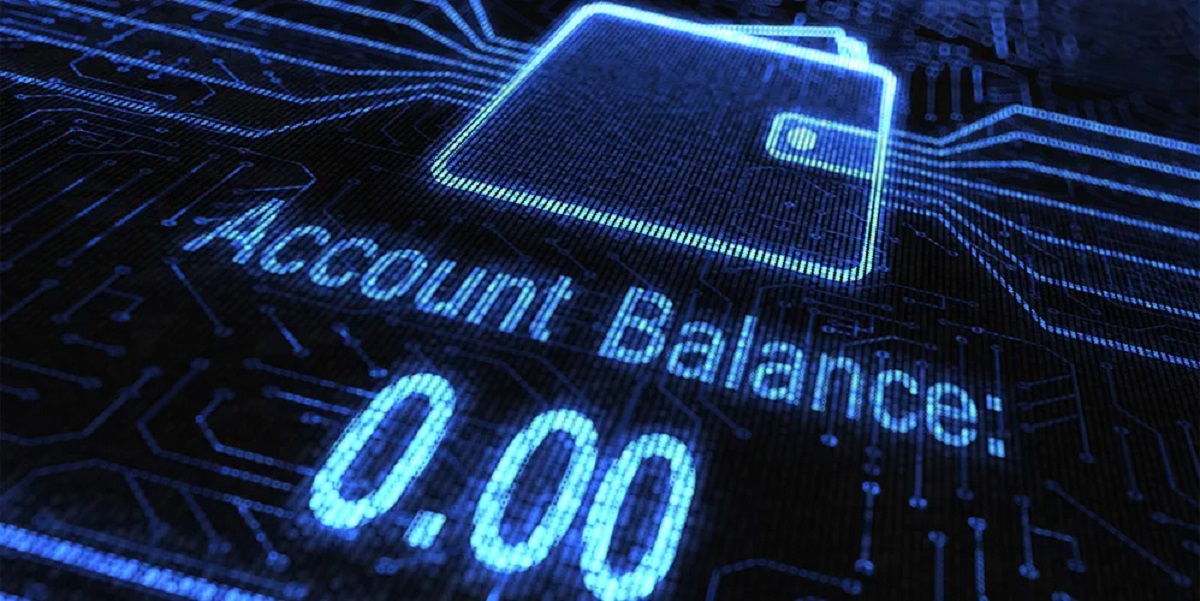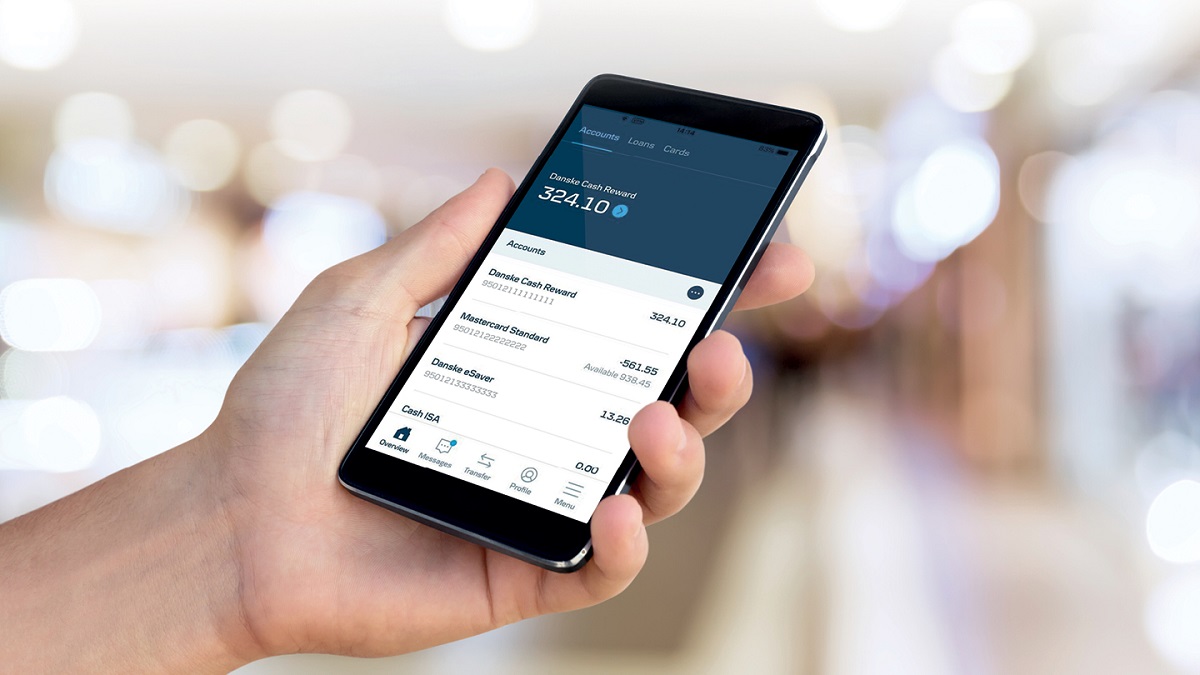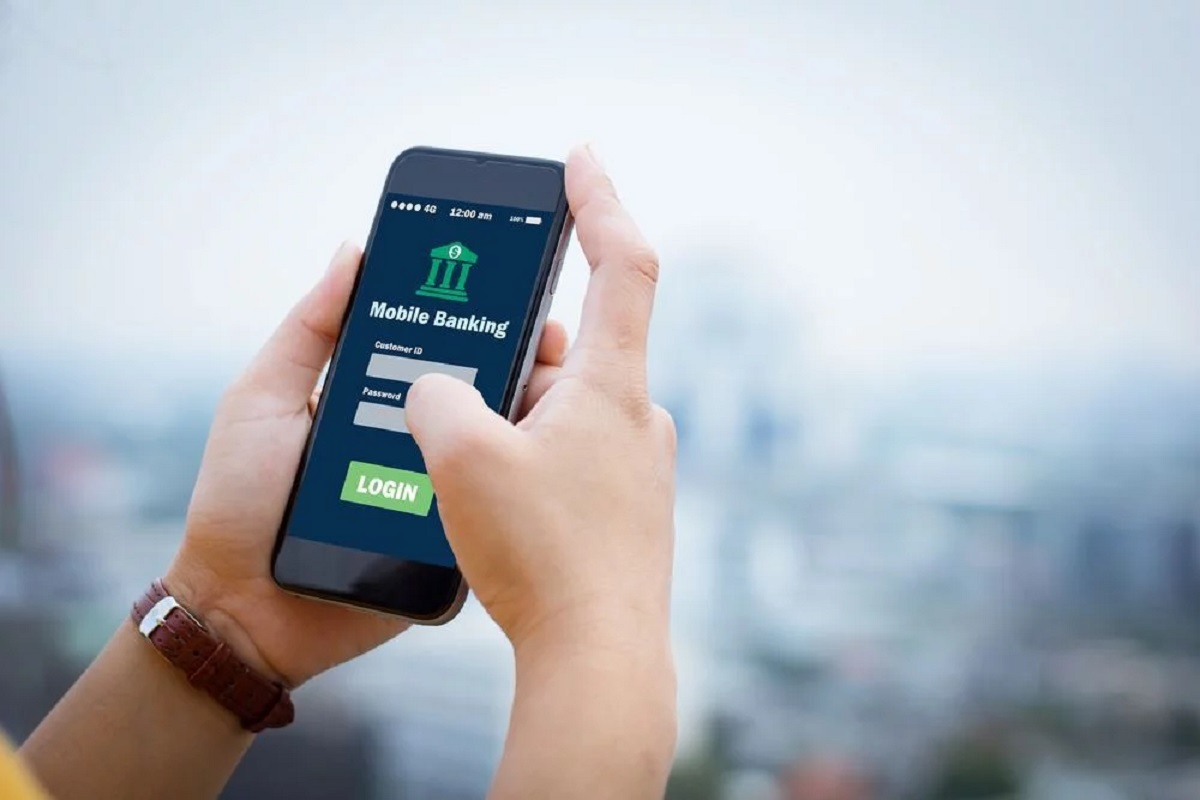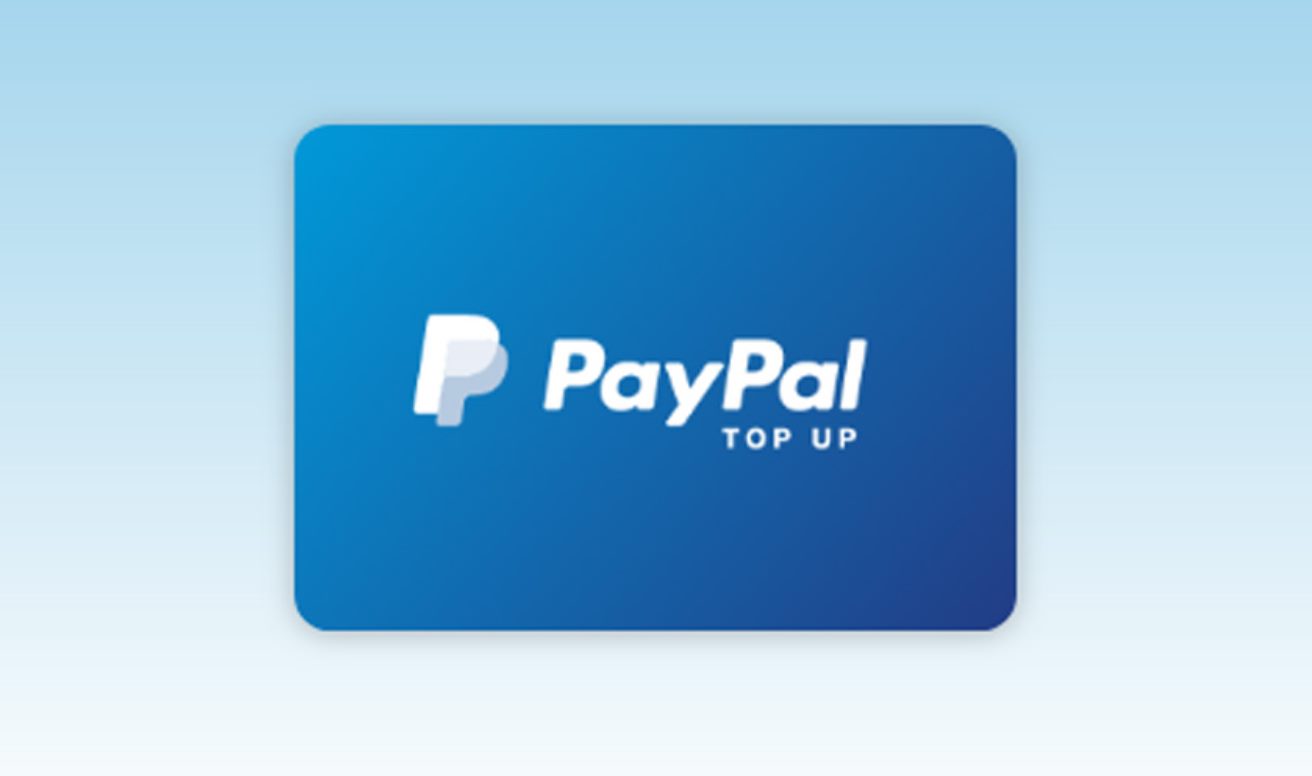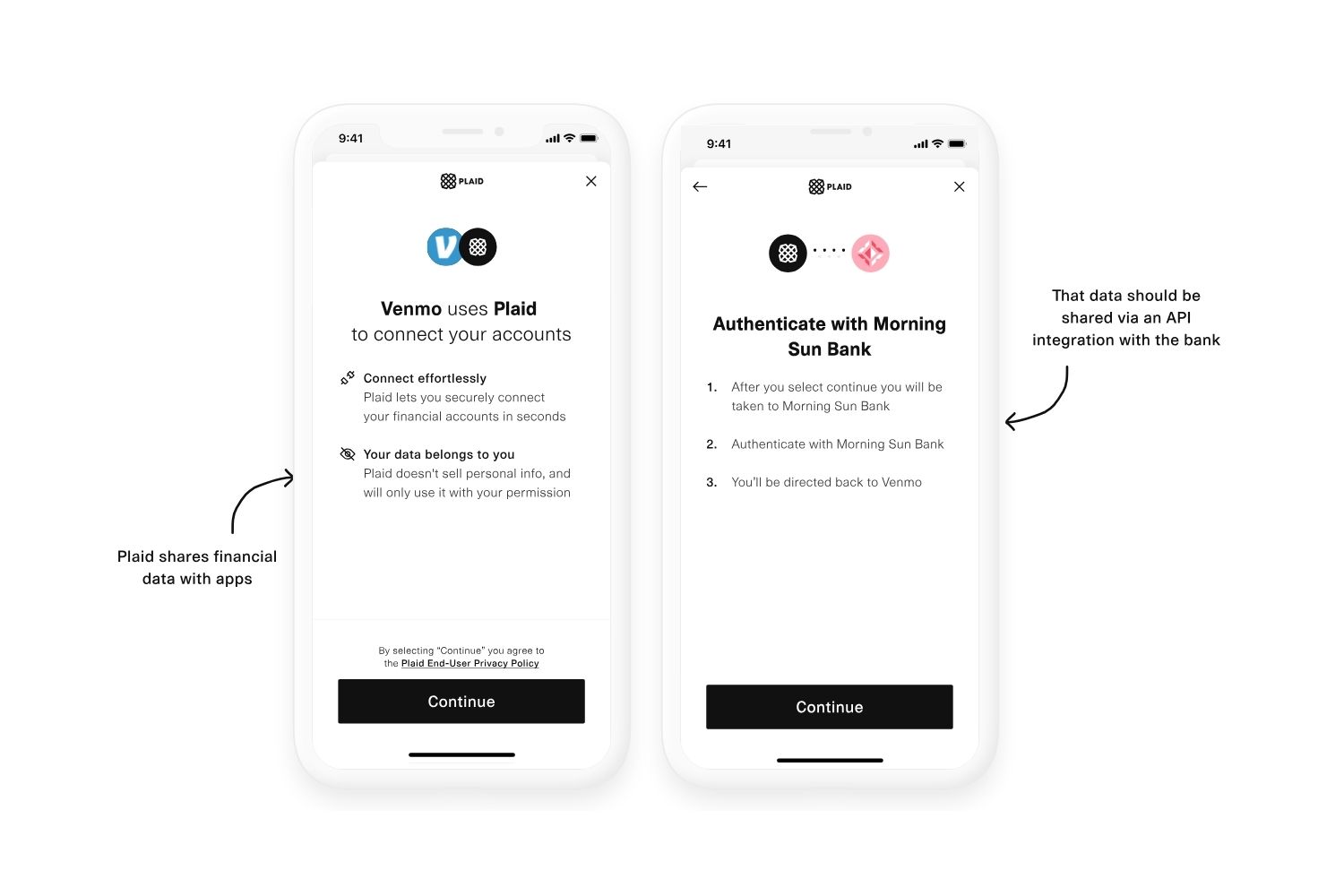Introduction
Welcome to the world of safe banking with a Safe Balance Banking Account! In this fast-paced digital age, having a secure and reliable banking account is crucial for managing your finances effectively. Whether you are a seasoned financial expert or just starting your financial journey, a Safe Balance Banking Account provides an excellent solution for safeguarding your money and enjoying a stress-free banking experience.
With the rise of online banking and the widespread availability of financial services, it can be overwhelming to choose the right banking account that suits your needs. However, a Safe Balance Banking Account is designed to cater to the needs of individuals who prioritize security, convenience, and simplicity in their banking transactions.
In this article, we will explore what a Safe Balance Banking Account entails, its benefits, eligibility requirements, opening procedure, key features, associated fees and charges, and how it compares to other types of banking accounts. We will also provide some useful tips to effectively manage your Safe Balance Banking Account.
Whether you are looking for a primary banking account or an additional account to complement your existing financial setup, understanding the ins and outs of a Safe Balance Banking Account will equip you with the knowledge to make an informed decision and enjoy a seamless banking experience.
So, let’s dive in and discover how a Safe Balance Banking Account can revolutionize your financial management and provide you with peace of mind when it comes to your hard-earned money.
What is a Safe Balance Banking Account?
A Safe Balance Banking Account is a unique type of banking account that offers customers a secure and hassle-free way to manage their finances. It is specifically designed for individuals who prefer a simplified banking experience and want to avoid the risk of overdrawing their account.
With a Safe Balance Banking Account, account holders are provided with additional safeguards to prevent them from spending more money than they have available. Unlike traditional checking accounts, which may allow transactions to go through even if there are insufficient funds, a Safe Balance Banking Account sets a predefined balance limit.
This balance limit ensures that account holders cannot overdraw their accounts or accumulate costly overdraft fees. It provides a level of financial discipline and peace of mind, especially for those who may struggle with budgeting or maintaining a minimum account balance.
While a Safe Balance Banking Account promotes responsible financial management, it still offers the convenience and accessibility of a traditional banking account. Account holders can still receive direct deposits, make electronic payments, and access their funds through ATMs or online banking services.
It’s important to note that a Safe Balance Banking Account is not a prepaid debit card or a secured credit card. It is a fully functional banking account that allows individuals to manage their money while keeping them within their spending means.
One of the key benefits of a Safe Balance Banking Account is the peace of mind it provides. With the balance limit in place, account holders can rest assured that they won’t accidentally overspend or face the stress of dealing with overdraft fees. This makes it an excellent option for individuals who want to maintain better control over their finances.
In the next section, we will explore the various benefits of having a Safe Balance Banking Account and how it can help individuals achieve their financial goals. So, let’s delve into the advantages of this type of banking account.
Benefits of a Safe Balance Banking Account
A Safe Balance Banking Account offers a range of benefits that can greatly enhance your banking experience. Whether you are a student, a young professional, or someone who wants to simplify their financial management, here are some advantages of having a Safe Balance Banking Account:
- Safeguards against overdraft fees: One of the biggest advantages of a Safe Balance Banking Account is that it sets a predefined balance limit, which prevents you from overdrawing your account. This eliminates the risk of incurring hefty overdraft fees and helps you maintain better control over your spending.
- Financial discipline: By setting a balance limit, a Safe Balance Banking Account encourages responsible money management. It helps you stay within your means and develop healthy financial habits, such as budgeting and tracking expenses.
- Peace of mind: With a Safe Balance Banking Account, you can enjoy peace of mind knowing that you won’t accidentally overspend or face the stress of dealing with overdraft fees. This can alleviate financial stress and allow you to focus on achieving your financial goals.
- Convenience and accessibility: Despite the balance limit, a Safe Balance Banking Account offers all the conveniences of a traditional banking account. You can receive direct deposits, make electronic payments, and access your funds through ATMs and online banking services.
- No monthly maintenance fees: Many Safe Balance Banking Accounts do not charge monthly maintenance fees, making it a cost-effective option for individuals who want to avoid unnecessary charges.
- Additional features: Some Safe Balance Banking Accounts come with additional features, such as mobile banking apps, digital wallets, and the ability to set up automatic bill payments. These features enhance convenience and simplify your banking experience.
By choosing a Safe Balance Banking Account, you can enjoy the benefits of effective financial management, peace of mind, and accessibility, all while avoiding the pitfalls of overdraft fees and excessive charges. In the next section, we will discuss the eligibility requirements for opening a Safe Balance Banking Account and the step-by-step process involved. Let’s dive in!
Eligibility for a Safe Balance Banking Account
Opening a Safe Balance Banking Account is a straightforward process, but there are certain eligibility requirements that you need to meet. While these requirements may vary slightly depending on the specific bank or financial institution, here are some common eligibility criteria for a Safe Balance Banking Account:
- Age: Most banks require you to be at least 18 years old to open a Safe Balance Banking Account. However, some financial institutions may offer options for minors with a parent or guardian as a joint account holder.
- ID and Address Verification: To open a Safe Balance Banking Account, you will typically need to provide valid identification documents, such as a driver’s license, passport, or government-issued identification card. Additionally, you may need to provide proof of address, such as a utility bill or a rental agreement.
- Social Security Number (SSN) or Individual Taxpayer Identification Number (ITIN): Depending on the country, you may be required to provide either a Social Security Number (SSN) or an Individual Taxpayer Identification Number (ITIN) for identification and tax purposes.
- No minimum credit score requirement: One of the advantages of a Safe Balance Banking Account is that it typically does not require a minimum credit score. This makes it an accessible option for individuals who may have a limited credit history or have faced financial challenges in the past.
- No previous banking history required: Unlike some traditional bank accounts, a Safe Balance Banking Account does not typically require a previous banking history. This makes it a suitable option for individuals who are new to banking or who may have had challenges with previous banking relationships.
- Other document requirements: Depending on the financial institution, you may be asked to provide additional documents such as proof of income, employment verification, or a social security card.
It’s important to note that eligibility requirements may vary among different banks and financial institutions. It’s recommended to check with the specific institution where you plan to open a Safe Balance Banking Account to confirm their requirements.
Now that we have explored the eligibility criteria, let’s move on to the next section to understand the step-by-step process of opening a Safe Balance Banking Account.
How to Open a Safe Balance Banking Account
Opening a Safe Balance Banking Account is a relatively simple and hassle-free process. While specific steps may vary depending on the bank or financial institution, here is a general guide to help you get started:
- Research and choose a bank: Start by researching different banks and financial institutions that offer Safe Balance Banking Accounts. Look for ones that provide the features and benefits that align with your needs.
- Gather necessary documents: Once you have chosen a bank, gather the necessary documents you will need to open the account. This may include identification documents, proof of address, social security number (SSN) or individual taxpayer identification number (ITIN), and any other required documents.
- Visit the bank or apply online: You can choose to visit the bank in person or apply online, depending on the options provided by the bank. If visiting in person, schedule an appointment or visit during the bank’s business hours.
- Speak with a representative: When you visit the bank or apply online, speak with a representative who can guide you through the account opening process. They will provide you with the necessary forms and explain the terms and conditions of the Safe Balance Banking Account.
- Complete the application: Fill out the application form with accurate and up-to-date information. Provide the required identification and address verification documents along with the completed application.
- Deposit the minimum required amount: Some Safe Balance Banking Accounts may require an initial deposit to open the account. Deposit the minimum required amount as specified by the bank.
- Review and sign the account agreement: Carefully review the account agreement and any associated fees and charges. Once you understand the terms, sign the agreement.
- Receive account details: Upon successful completion of the application process, the bank will provide you with your account details, including the account number and any relevant login information for online banking.
- Activate and fund the account: Follow the instructions provided by the bank to activate and fund your Safe Balance Banking Account. This may involve making an initial deposit or setting up direct deposit.
Keep in mind that the specific steps and requirements may vary among banks and financial institutions. It’s always a good idea to contact the bank directly or visit their website for detailed instructions specific to their account opening process.
Now that you know how to open a Safe Balance Banking Account, let’s move on to the next section to explore the features and benefits you can expect from this type of account.
Features of a Safe Balance Banking Account
A Safe Balance Banking Account comes with a range of features that aim to provide a secure and convenient banking experience. While the specific features may vary depending on the bank or financial institution, here are some common features you can expect:
- Balance Limit: One of the primary features of a Safe Balance Banking Account is the balance limit. This predefined limit ensures that you cannot spend more money than you have in your account, helping you avoid overdrafts and associated fees.
- Online and Mobile Banking: Most Safe Balance Banking Accounts offer online and mobile banking platforms. This allows you to conveniently manage your account, check balances, transfer funds, pay bills, and access important account information from the comfort of your computer or mobile device.
- Debit Card: A Safe Balance Banking Account typically comes with a debit card linked to your account. This debit card can be used for purchases at stores or online, as well as to withdraw cash from ATMs.
- Direct Deposit: Many Safe Balance Banking Accounts support direct deposit, which allows you to have your paycheck, government benefits, or other recurring payments deposited directly into your account. This eliminates the need for physical checks and ensures quicker access to your funds.
- Electronic Payments: With a Safe Balance Banking Account, you can make electronic payments to individuals or businesses through various methods, such as online bill pay, person-to-person transfers, or even digital wallet services.
- Banking Alerts: Some Safe Balance Banking Accounts offer the option to set up banking alerts. These alerts can notify you about account balances, transaction activity, low balances, or upcoming bill due dates, helping you stay on top of your finances.
- No Overdraft Fees: As a distinctive feature, Safe Balance Banking Accounts typically do not charge overdraft fees. This provides a level of financial protection and peace of mind, knowing that you won’t incur costly fees for accidentally overspending.
These features are designed to simplify your banking experience and ensure that you have the tools needed to manage your finances efficiently. It’s important to note that the availability of specific features may vary among different banks and financial institutions.
Now that we’ve explored the features of a Safe Balance Banking Account, let’s move on to the next section to understand the fees and charges associated with this type of account.
Fees and Charges Associated with a Safe Balance Banking Account
While a Safe Balance Banking Account offers many benefits, it’s important to be aware of any fees and charges associated with the account. Although specific fees may vary depending on the bank or financial institution, here are some common fees you might encounter:
- Monthly Maintenance Fee: Some Safe Balance Banking Accounts charge a monthly maintenance fee to cover the cost of providing banking services. This fee can vary, so it’s important to review the account terms and conditions to understand if and how much you may be charged.
- ATM Fees: When using your debit card to withdraw cash from an ATM outside of your bank’s network, you may incur fees. These fees can include ATM operator fees and foreign ATM fees, so it’s advisable to use ATMs within your bank’s network to avoid additional charges.
- Overdraft Fees: While a Safe Balance Banking Account significantly reduces the risk of overdrawing your account, it’s important to be aware that if you exceed your balance limit, you may still be subject to overdraft fees. It’s essential to manage your account responsibly to avoid these fees.
- Transaction Fees: Some banks may impose fees for certain transactions, such as wire transfers, outgoing transfers, or foreign transactions. These fees can vary, so it’s important to review the fee schedule provided by your bank.
- Paper Statement Fee: Opting for paper statements instead of electronic statements may result in additional fees. To avoid these fees, consider opting for electronic statements, which are typically provided free of charge.
- Excess Transaction Fees: Certain Safe Balance Banking Accounts have limitations on the number of transactions you can make within a given period. If you exceed this limit, you may be charged an excess transaction fee for each additional transaction.
It’s crucial to carefully review the fee schedule and terms and conditions provided by your bank to understand the specific fees associated with your Safe Balance Banking Account. By being aware of these fees, you can effectively manage your account and minimize any avoidable charges.
In the next section, we will compare a Safe Balance Banking Account with other types of banking accounts to help you make an informed decision about the best account for your needs.
Comparison with Other Types of Banking Accounts
When choosing a banking account, it’s important to consider the different options available and compare them to determine which one best suits your needs. Let’s compare a Safe Balance Banking Account with other common types of banking accounts to help you make an informed decision:
- Traditional Checking Accounts: Unlike a Safe Balance Banking Account, traditional checking accounts do not have a predefined balance limit. This means that you have more flexibility in terms of spending and withdrawals, but it also carries the risk of overdrawing your account and incurring expensive overdraft fees.
- Savings Accounts: Savings accounts are designed to help you save money and typically offer higher interest rates than checking accounts. However, they may have restrictions on the number of withdrawals per month and may not offer the same level of accessibility for everyday transactions.
- Prepaid Debit Cards: Prepaid debit cards offer a way to manage your spending by loading a specific amount onto the card. While they can provide some control over your finances, they may not offer the same features and benefits as a traditional checking or Safe Balance Banking Account, such as direct deposit or online banking.
- Secured Credit Cards: Secured credit cards require a security deposit to access a line of credit. They can help build or repair your credit history, but they differ from Safe Balance Banking Accounts since they involve borrowing money and paying interest on balances carried over from month to month.
When comparing these different types of banking accounts, a Safe Balance Banking Account stands out as a middle ground between the flexibility of a traditional checking account and the safety and control of prepaid or secured credit cards. It provides a balance limit to prevent overdrawing and costly fees while offering the convenience and accessibility of a regular checking account.
Ultimately, the best choice will depend on your individual financial goals, spending habits, and personal preferences. It’s important to carefully consider your needs and evaluate the features, fees, and limitations of each account type to make an informed decision.
In the next section, we will provide some helpful tips for effectively managing a Safe Balance Banking Account. Let’s dive in!
Tips for Managing a Safe Balance Banking Account Effectively
Managing a Safe Balance Banking Account effectively is essential for maximizing its benefits and maintaining control over your finances. Here are some tips to help you make the most of your account:
- Create a Budget: Establishing a budget is crucial for successful financial management. Determine your income, expenses, and savings goals to ensure that you stay within your balance limit and avoid overspending.
- Monitor Your Account: Regularly review your account activity and transaction history to keep track of your spending, deposits, and withdrawals. This will help you identify any discrepancies and ensure the accuracy of your account balance.
- Set Up Alerts: Take advantage of the banking alerts feature to receive notifications about low balances, deposits, withdrawals, or any suspicious activity. These alerts will help you stay informed and promptly address any issues.
- Avoid Unnecessary Fees: Familiarize yourself with the fee schedule associated with your Safe Balance Banking Account and make conscious efforts to avoid unnecessary charges. This includes using ATMs within your bank’s network, adhering to transaction limits, and opting for electronic statements.
- Automate Savings: Consider setting up automatic transfers from your Safe Balance Banking Account to a savings account or another investment vehicle. This will help you build savings effortlessly and ensure that your funds are allocated towards your financial goals.
- Track Your Spending: Keep a record of your expenses and categorize them to identify areas where you might be overspending. This will allow you to make adjustments and ensure that your spending aligns with your budget and financial objectives.
- Utilize Online and Mobile Banking Tools: Take advantage of the online and mobile banking features offered with your Safe Balance Banking Account. Set up bill payments, transfer funds, and monitor your account activity conveniently from your computer or mobile device.
- Communicate with Your Bank: If you have any questions or concerns about your Safe Balance Banking Account, don’t hesitate to reach out to your bank’s customer service or visit a local branch. They can provide guidance and help you navigate any account-related issues.
By implementing these tips, you can effectively manage your Safe Balance Banking Account and optimize its benefits to achieve your financial goals. Remember to stay proactive and stay in control of your finances to make the most of your banking experience.
In the final section, we will conclude the article with a summary of the key points discussed.
Conclusion
In conclusion, a Safe Balance Banking Account provides a secure and convenient way to manage your finances while avoiding the risks of overdrawing your account. With its balance limit feature, this type of account promotes responsible financial management and eliminates the stress of incurring costly overdraft fees.
Throughout this article, we have explored the features, benefits, eligibility requirements, and the process of opening a Safe Balance Banking Account. We have also compared it to other types of banking accounts, highlighting its unique advantages. By following the tips provided, you can effectively manage your account and make the most of the banking experience.
It’s important to remember that while features and fees may vary among different banks and financial institutions, the core concept of a Safe Balance Banking Account remains the same. It offers individuals the ability to safeguard their money, maintain control over their spending, and enjoy the conveniences of online and mobile banking.
When choosing a banking account, take the time to assess your financial needs, goals, and spending habits. Determine whether a Safe Balance Banking Account aligns with your preferences and provides the level of security and convenience you desire.
Finally, always consult with your chosen bank or financial institution to obtain the most accurate and up-to-date information on their specific offerings and requirements for a Safe Balance Banking Account.
With the right approach and effective management, a Safe Balance Banking Account can serve as a valuable tool in your financial journey, providing stability and peace of mind as you navigate your financial goals.







